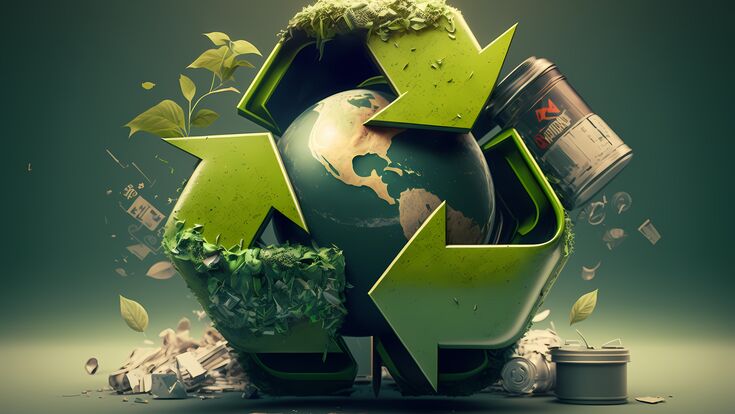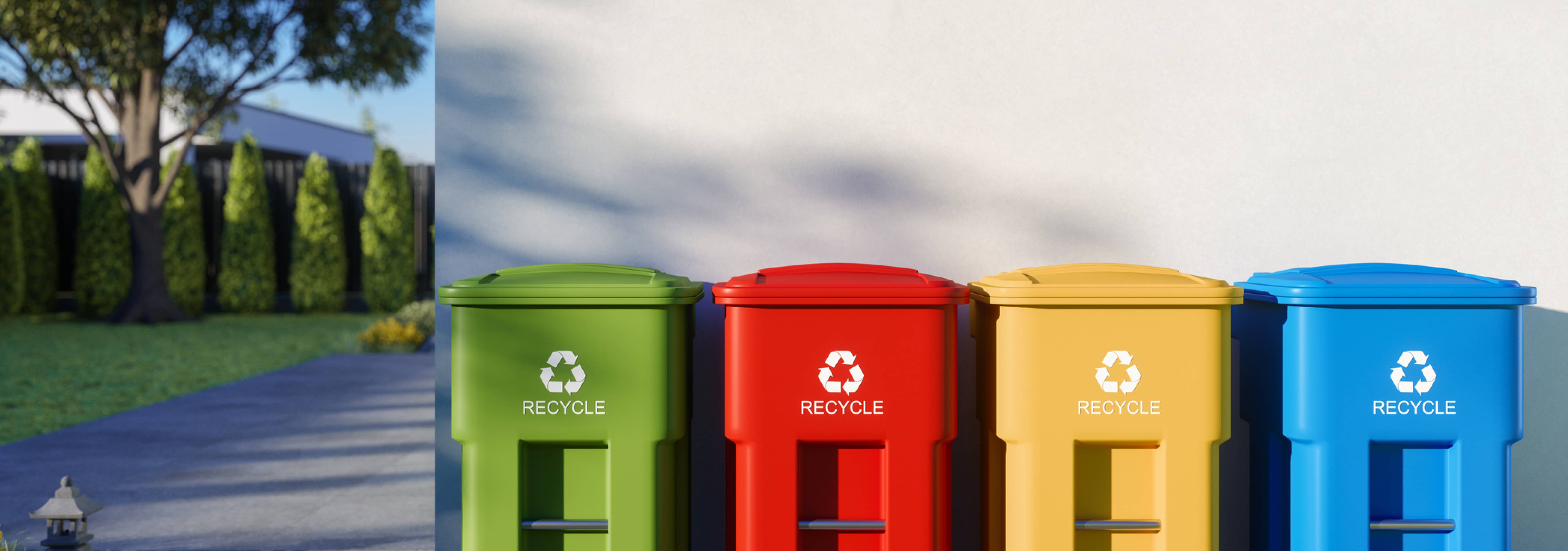Discovering Different Kinds Of Waste in Modern Waste Management Systems
The contemporary landscape of waste monitoring entails browsing a complicated array of waste kinds, each needing specialized handling and disposal techniques to minimize environmental effects. Municipal solid waste, dangerous waste, electronic waste, and natural waste each present distinct obstacles and chances for source recovery.
Metropolitan Strong Waste
Local solid waste, often referred to as family trash or garbage, encompasses a range of discarded products produced by residential, business, and institutional sources within a municipality. This waste stream commonly consists of things such as packaging, food scraps, yard trimmings, paper, plastics, fabrics, and discarded household goods. The administration of municipal strong waste is a crucial component of metropolitan planning and public wellness, necessitating efficient collection, transport, and disposal systems.
Efficient waste management systems are designed to minimize environmental impact while maximizing source recovery. This usually entails a combination of methods including composting, recycling, and landfilling. Reusing programs target materials like paper, glass, metals, and specific plastics, diverting them from land fills and reintroducing them into the production cycle. Composting natural waste, such as food scraps and backyard trimmings, not just minimizes landfill use but likewise creates beneficial dirt changes.
Municipalities must additionally attend to the logistical and economic difficulties related to waste administration. Carrying out pay-as-you-throw systems, boosting public understanding, and buying technology can significantly improve waste diversion prices. By incorporating these practices, communities can foster sustainable areas, reduce greenhouse gas exhausts, and save all-natural resources.
Hazardous Waste

Effective hazardous waste monitoring entails a number of crucial actions: recognition, therapy, disposal, and segregation. Segregation ensures that dangerous materials are stored separately from non-hazardous waste to prevent cross-contamination.
Regulative structures, such as the Source Conservation and Recovery Act (RCRA) in the USA, supply standards and criteria for contaminated materials administration. Adherence to these regulations, coupled with developments in waste treatment technologies, is important in mitigating the threats connected with contaminated materials.
Digital Waste
Digital waste, frequently referred to as e-waste, stands for a swiftly growing challenge in waste monitoring systems internationally. This kind of waste includes discarded digital gadgets and tools such as smartphones, computers, tvs, and various other digital home appliances. The fast pace of technical improvement, coupled with reducing item life expectancies and consumer need for the newest tools, has actually greatly enhanced the quantity of e-waste created each year.
E-waste is particularly bothersome due to its complex make-up, usually having unsafe compounds like cadmium, mercury, and lead, which present substantial ecological and health and wellness threats otherwise properly managed. On the other hand, e-waste likewise consists of valuable products such as gold, copper, and silver, which can be recouped and reused. The double nature of e-waste-- both important and hazardous-- necessitates customized handling, reusing, and disposal processes.
Reliable e-waste monitoring includes stringent regulatory frameworks, robust collection systems, and advanced reusing modern technologies. Public awareness and involvement are crucial, as incorrect disposal methods, Continue such as illegal unloading and informal recycling, worsen environmental contamination and wellness dangers. Boosting e-waste administration techniques is crucial for alleviating ecological impact and recovering important sources in a significantly digital world.

Organic Waste
Organic waste, comprising kitchen area scraps, yard trimmings, and agricultural deposits, stands for a significant section of the global waste stream. This kind of waste is biodegradable, meaning it can be damaged down by bacteria right into simpler natural compounds. In spite of its capacity for all-natural disintegration, incorrect management of natural waste can cause damaging ecological impacts, including the exhaust of greenhouse gases such as methane, which add to environment adjustment.
Efficient administration of organic waste is crucial for reducing these environmental influences (recycling lives services). Composting is a widely taken on technique, transforming natural waste right into nutrient-rich garden compost that can improve dirt wellness and agricultural performance. Furthermore, anaerobic food digestion is an arising modern technology that transforms organic waste into biogas, a useful link renewable resource source, and digestate, which can be used as plant food
Municipalities and waste monitoring entities should execute durable natural waste collection and therapy programs to make the most of the advantages of these processes. Public education projects can additionally play a critical duty in motivating households and services to separate organic waste from various other sorts of waste. By prioritizing the monitoring of natural waste, cultures can minimize land fill usage, lower greenhouse gas emissions, and develop valuable by-products for farming usage.

Innovative Waste Administration
In the world of waste monitoring, cutting-edge methodologies are changing just how cultures handle their refuse, aiming for sustainability and efficiency. These improvements include a range of technologies and techniques that improve recycling rates, lower land fill reliance, and lower environmental impact. One popular technology is the implementation of smart waste containers geared up with sensing units that monitor fill degrees and enhance collection routes. This not just lowers fuel intake however also lessens greenhouse gas emissions.
Another remarkable growth is the adoption of waste-to-energy (WtE) technologies. By converting non-recyclable waste into usable energy through processes such as incineration and anaerobic food digestion, WtE minimizes garbage dump worry and gives a renewable resource resource. Advancements in chemical reusing enable for the malfunction of complex plastics into their initial monomers, enabling the production of new, top quality plastic products.
In addition, the circular economic situation version is gaining grip, stressing the layout of products and systems that prioritize reusability and resource effectiveness. This holistic approach motivates industries to minimize waste generation from the outset. With these cutting-edge strategies, modern-day waste monitoring systems are not just addressing the instant challenges of garbage disposal yet additionally leading the way for a more lasting future.
Conclusion
A comprehensive understanding of community strong waste, harmful waste, electronic waste, and natural waste, coupled with the execution of ingenious waste monitoring options, is address critical for minimizing ecological influences. Integrating technologies such as smart waste containers and waste-to-energy systems can improve efficiency and sustainability. Reliable waste administration techniques not only foster source recuperation but also advertise public recognition and participation, ultimately adding to the growth of a circular economy.
The contemporary landscape of waste monitoring entails navigating an intricate selection of waste kinds, each calling for specialized handling and disposal approaches to mitigate ecological impacts. Metropolitan solid waste, unsafe waste, electronic waste, and organic waste each existing distinctive difficulties and possibilities for source healing.Electronic waste, commonly referred to as e-waste, stands for a swiftly expanding challenge in waste monitoring systems around the world. With these cutting-edge techniques, contemporary waste monitoring systems are not just addressing the prompt difficulties of waste disposal however likewise paving the means for a more sustainable future.
A thorough understanding of community solid waste, hazardous waste, electronic waste, and organic waste, coupled with the implementation of cutting-edge waste administration remedies, is vital for mitigating environmental influences. (recycling lives services)